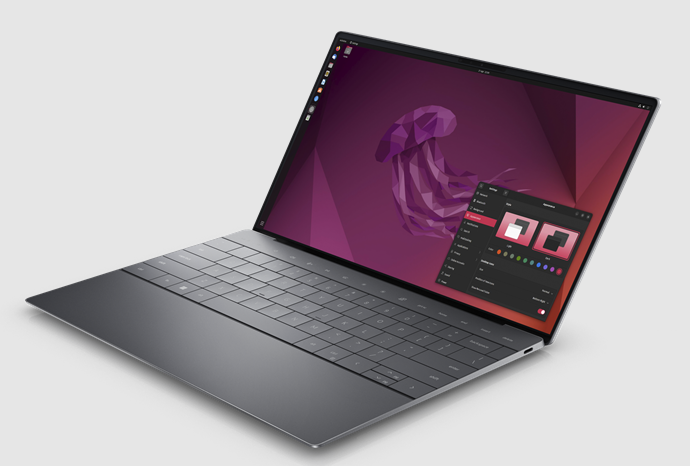Today, the Dell natively from Ubuntu Linux). Many users, especially developers including Linus Torvalds, love it. As Mr. Torvalds recently said: “Normally I don’t name names, but I’m making an exception for the XPS 13, because I liked it so much that I ended up buying one for my daughter when ‘She’s gone to college.’
So how did Dell, best known for its fleets of Windows-equipped PCs, end up building high-end Ubuntu Linux laptops? Barton George, developer community manager at Dell Technologies, told the story of “Project Sputnik” this week during a presentation at the popular Linux and open-source trade show All Things Open.
First, you should know that Dell has been equipping its desktops and laptops with Linux since the mid-2000s. In 2006, Michael Dell told me that Dell would be the first major PC vendor to come out and take support Linux desktops — and it proved to be a success.
The volume problem at Dell
And George explained that Dell has always done high volume with these computers. Not the same volume as Windows machines, of course. But enough that Dell has always offered Linux-based workstations – primarily Red Hat Enterprise Linux (RHEL).
However, none of these machines really attracted developers. George explains:
“In 2011, we tried to figure out how Dell could become more relevant to developers. Dell wasn’t very top of mind among developers.”
This idea was born from a conversation between Dell and Stephen O’Grady, co-founder of RedMonk. Mr Barton remembers Mr O’Grady suggesting it would be great for developers “to take one of your laptops, put Ubuntu on it and run it. We said it was great idea, but that would never happen because we are Dell. Our laptops need to generate huge volumes and revenue. When I spoke to one of our superiors about the volumes we were thinking of selling, he m ‘ replied: “Yes, that’s what we sell in Belgium on Tuesdays, between three and four in the afternoon.”
$40,000 to pursue the idea
Despite this discouraging assessment, when Dell created an internal innovation fund, Barton presented his plan again. This time he received $40,000 to pursue his idea. “That was enough to get us started,” George recalls. “So we started by putting together a team. But none of us were working full time on this project. It was kind of our free time.”
George then approached Google and Amazon. “‘Here’s what we’re trying to do,’ he explained to them. Are you interested?” They didn’t order 10,000 units, but they didn’t chase me away and laugh in my face either.” That was enough to prove that there was a business case for an Ubuntu Linux laptop for developers.
During the same period, George announced Dell’s plans on his personal blog, and his traffic increased from 60 views per day to 15,000. Then the team wanted to make sure they had done the right things. things. Because it wasn’t just a matter of installing a distribution on a machine and hoping for the best.
But why “Sputnik”?
George adds: “We created a raw image that people could use on the It wasn’t an official release or support. But the bottom line is that if you couldn’t do it with the general public. With the developers – who know it’s an beta – it was possible. And we fixed most of the problems. The biggest problem apparently was the touchpad.
So Dell worked with Canonical, the parent company of Ubuntu Linux, to make sure all the drivers were in place. The name “Project Sputnik” is a nod to Mark Shuttleworth, founder of Ubuntu and CEO of Canonical. Ten years before the project itself, Shuttleworth had spent eight days orbiting Earth aboard a Soviet Soyuz spacecraft. George and the crew decided that “Soyuz” was not very inspiring, and so the company opted for “Sputnik”.
George continues:
We announced a beta program for the machine with a 10% discount offer. We figured we’d probably get 300 people. Instead, we got 6,000. That’s when senior management said OK, you’ve got something concrete. We went from slides to launch in nine months. Which is very fast.”
Now, more than a decade later, the system and other Ubuntu-Linux-powered systems are more popular than ever. From a DIY project, George and company created a pillar of Linux hardware for developers and power users.
Source: “ZDNet.com”
